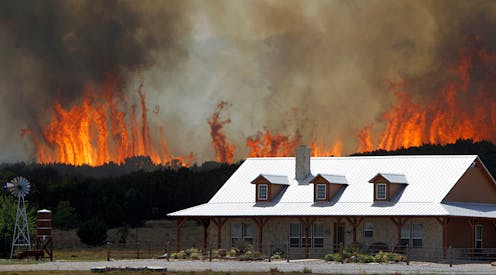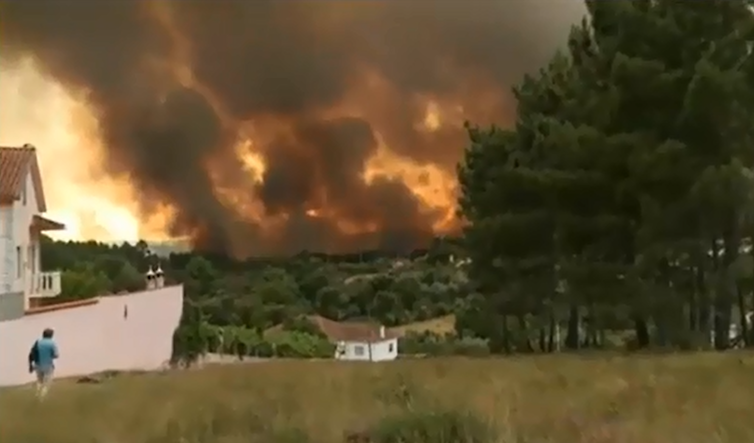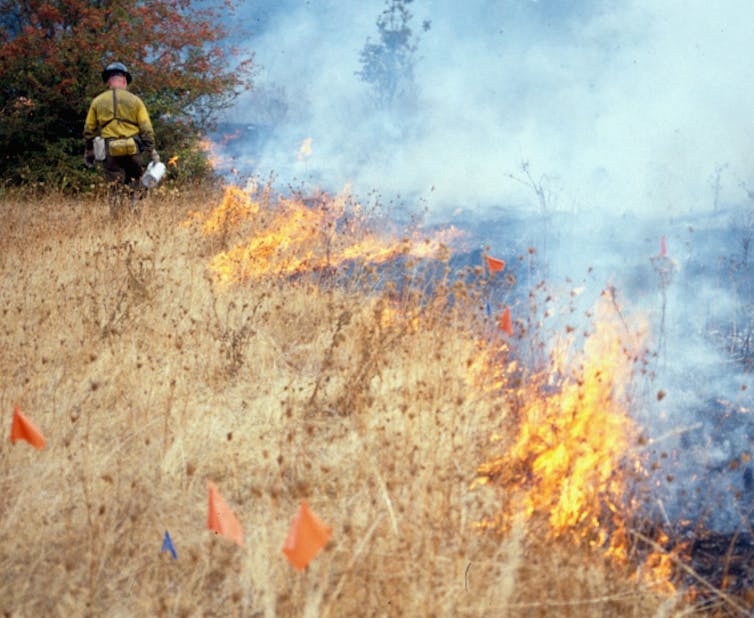As wildfires expand, fire science needs to keep up
Many countries around the world are vulnerable to wildfires, but a fire engineer warns that most are not spending enough on research into how fires spread and ways to reduce risks.

In the month of October nearly 250,000 acres, more than 8,000 homes and over 40 people fell victim to fast-moving wildfires in Northern California, the deadliest and one of the costliest outbreaks in state history. Now is the time to wrestle with hard questions. Why did communities that were deemed safe suffer major damage? Should they be rebuilt in the same way? Are there better ways to fight extreme fires and limit their impact? How can emergency planners prepare better for scenarios where full evacuation is not possible?
This is a global challenge. Brazil, Indonesia, many parts of Africa and Canada typically experience larger wildfires (measured by area burned) than the United States on a yearly average. This year Chile and Portugal have also suffered enormous losses. Australia’s Black Saturday fires in 2009 were its worst fire event ever.
Fire is part of ecosystems in much of the world, so societies must learn to live with it. But key issues are still poorly understood. What is the right degree of fire management to decrease the impact of catastrophic fires? What is the most efficient way to protect the wildland-urban interface – the area where houses meet or intermingle with undeveloped wildland vegetation? And what is the best way to evacuate?
In my view and that of other researchers, many countries, including the United States, are underfunding research designed to answer these questions.

Moving into harm’s way
Wildfires are increasing and affecting more areas worldwide. One cause is urban sprawl and the dramatic expansion of the wildand-urban interface. In the 1990s this zone increased by almost 11 percent in California, Oregon and Washington, adding over 1 million housing units – mostly in areas of moderate to high fire risk. At the same time, climate change is creating worse and more frequent wildfire conditions.
No one can control the weather, which is likely to become more extreme, but it is critical to do more to understand vulnerabilities that exist at the wildland-urban interface. Research has identified some factors that create these risks, including the ease with which homes ignite and the spread of fire between structures. Developing solutions will require quantifying the risks. It is also important to evaluate how vegetation treatment, structure hardening and better community design can decrease the likelihood of structural ignition and fire spread.

Winds, flames and fuels
U.S. building and fire protection standards and regulations have improved in the last 10 to 15 years, particularly in California, but many communities are still extremely vulnerable. Best practices, such as the National Fire Protection Association’s Firewise USA program and California’s Fire Safe, are a good start but should be expanded, based on research.
Understanding of vulnerabilities at a structural level is improving but not sufficient yet. Once fire moves from wildlands into developed areas, flames are fueled by engulfed homes and structures, creating conflagrations. For example, the California fires consumed entire neighborhoods as flames spread unhindered from one flammable element to another. This pattern has also been observed in many other locations.
Better community design could help prevent this domino effect, averting massive property losses and evacuations. Communities should contain patchworks of flammable fuels such as vegetation, houses and cars, interspersed with less flammable and nonflammable areas such as parking lots and areas cleaned of vegetation. This strategy can decrease fire intensity, slow down fires and break down large fire fronts into smaller fingers that are easier to fight.
Another priority is the role of flammable building materials. Structural ignition often starts with firebrands – pieces of burning wood that are lofted by winds, and can spread wildfire past barriers and firebreaks – but scientists are still working to quantify their impact.
Many interacting factors influence whether and how wildfires will spread, including fire intensity, wind intensity, the quantity of firebrands that land on structures, the heat that impacts structures, how structures ignite, the distance between structures and vegetation, and the distance between structures. Researchers should aim to design suites of engineering solutions that will be versatile enough to adjust to specific scenarios and quantified exposures. They should include small-scale steps, such as removing flammable vegetation, pruning trees, using less-flammable construction materials, and dealing with identified vulnerabilities such as fences. And they should extend to larger-scale strategies, such as breaking up wildfire fronts, slowing down fire spread and redesigning communities.
Major costs, modest funding
U.S. fire research is funded by the U.S. Forest Service, the National Institute of Standards and Technology and other federal agencies. Universities receive funding through the Joint Fire Science Program, which is jointly funded by the Interior Department and the Forest Service, and indirectly through other agencies such as the National Science Foundation, the Defense Department’s environmental research programs and NASA.
Federal funding for fire research pales compared to the cost of fighting wildfires and the economic damage they cause. For example, in 2017 the Forest Service received about US$27 million for the National Fire Plan Research and Development Program and the Joint Fire Science Program, while the Interior Department received about $6 million for the Joint Fire Science Program. President Trump’s 2018 budget request would terminate Forest Service’s participation in the Joint Fire Science Program and reduce the Department of the Interior’s funding for the program to $3 million, which would mean no new projects and topics funded. Many members of the research community are concerned about this lack of investment.
For comparison, the Forest Service and Interior together spent nearly $2 billion in 2016 fighting wildfires. The Forest Service alone has spent over $2 billion in this fiscal year on wildland fire suppression. And preliminary damage estimates for the California wildfires range from $1 billion to $6 billion or more.
Similar pressures undercut funding for wildfire prevention in Portugal after its 2011-2014 recession. And the European Union stopped funding basic science related to fire dynamics and wildland-urban interface fires almost a decade ago, focusing instead on applied technological projects and more general research on natural disasters. Funding for firefighting has also declined in Russia, where environmental groups claim that the number of fires is significantly underreported.
Fire conditions are constantly evolving, and basic research coupled with engineering solutions must keep up. Designing more resilient communities and infrastructure and protecting people more effectively are not onetime goals – they are constant. Currently nations are failing to meet the challenge, and impacts on communities are increasing.
Albert Simeoni receives funding from the Joint Fire Science Program via the U.S. Department of the Interior and from the U.S. Department of Defense.
Read These Next
West Antarctica’s history of rapid melting foretells sudden shifts in continent’s ‘catastrophic’ geo
A picture of what West Antarctica looked like when its ice sheet melted in the past can offer insight…
Local democracy is holding strong, but rural communities are falling behind, new survey of Michigan
Officials from 70% of Michigan’s 1,856 cities, villages, counties and townships completed the survey.
I study rat nests − here’s why rodents make great archivists
An archaeologist reveals what she learned from sifting through a 200-year-old rat nest recovered from…






